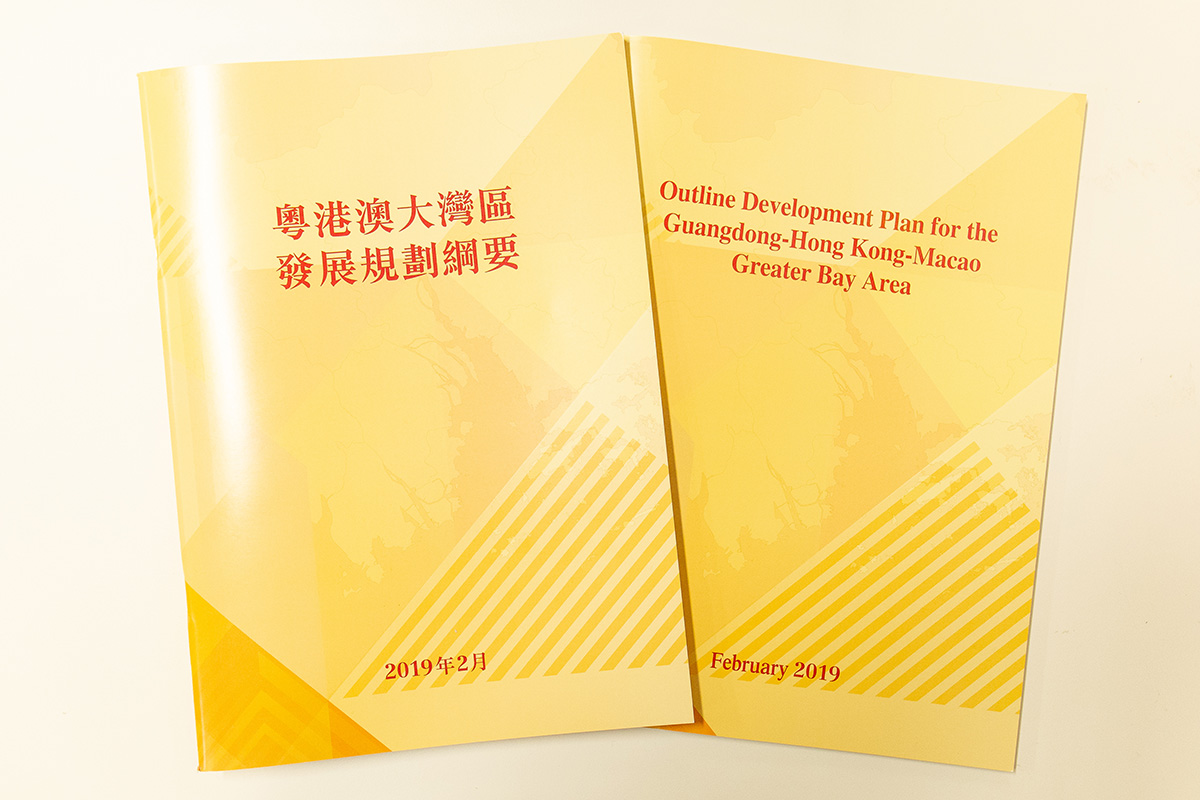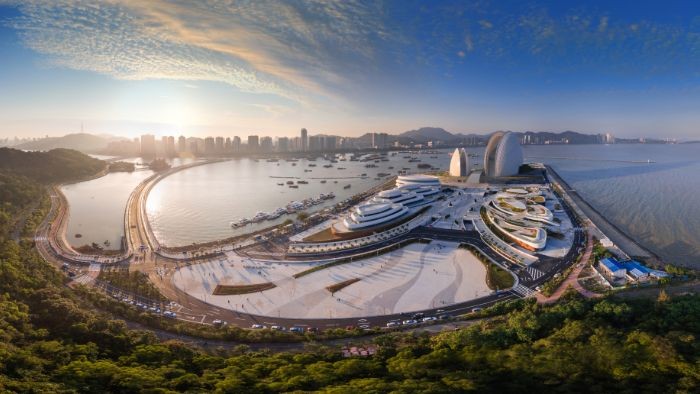The Greater Bay Area, a term often associated with South China, encompasses the Pearl River Delta, including Hong Kong, Macao, Guangzhou, Shenzhen, and other cities. This region represents an ambitious initiative to merge 11 cities into an integrated economic and business hub. Focusing on innovation-driven development, the Greater Bay Area aims to play a crucial role in national development, positioning itself at the forefront of global competitiveness and influence.
The unique “One Country, Two Systems” policy is at the heart of this vision, which allows Hong Kong and Macao to maintain distinct economic and administrative systems from mainland China. These two Special Administrative Regions’ strategic positioning alongside the burgeoning cities of Guangzhou and Shenzhen creates a powerful dynamic for fostering economic synergy and sustainable growth.
The Guangdong-Hong Kong-Macao Greater Bay Area is a testament to China’s commitment to opening up its economy and driving forward with high-tech advancements. It is expected to be a powerhouse of technology and innovation, leveraging the strengths of its member cities to create a prosperous and globally significant Bay Area by fostering trade, finance, and cultural exchanges.
Economic Landscape
The Greater Bay Area, an ambitious initiative by China, combines economic development and innovation across key regions. This area’s united image of financial strength, industrial diversity, and strategic urban roles within the global economy is impressive.
Gross Domestic Product
The Greater Bay Area’s GDP surpasses USD 2 trillion compared to the economies of leading nations like Canada. Most of this economic output comes from Guangdong Province, a manufacturing and trade powerhouse. Hong Kong and Macao contribute as international financial centers, enhancing the region’s economic stature.
Key Industries
This region boasts a range of key industries, including technology, professional services, and manufacturing. As a global technology hub, it’s home to numerous Fortune 500 companies, while regions like Qianhai are designed for modern service industries and innovation. The industrial fabric is complemented by ancient craft cities like Jiangmen and Foshan, which are known for their historical manufacturing expertise.
Major Cities and Their Roles
Hong Kong is a global financial leader, while Guangdong Province includes cities like Guangzhou and Shenzhen, pivotal in manufacturing and technological innovation. Macao serves as a leisure and tourism hub, and smaller cities like Foshan and Jiangmen are integral for their industrial contributions. They house robust populations and serve unique roles in the region’s economic tapestry.
Business and Trade Hubs
Hong Kong and Guangzhou operate as vital international trade centres, a cornerstone of the region’s commitment to becoming an International First-Class Bay Area. Hong Kong’s evolution includes significant economic initiatives, such as the proposed billion-dollar fund to attract investment and professional services. The Greater Bay Area is set to challenge other global bay areas through its interconnected infrastructure and pro-business environment.
Infrastructure and Connectivity
The Greater Bay Area (GBA) is advancing its infrastructure and connectivity through strategic transportation networks and regional integration, which is significantly impacting the flow of people and goods.
Transportation Networks
The GBA’s focus on developing transportation systems is pivotal for its transformation. Aircraft movements at core aviation hubs have intensified, with passenger throughput in key airports like Guangzhou and Shenzhen rising substantially. The Hong Kong Section of the XRL, which connects with mainland China’s high-speed rail network, exemplifies the expansion in cross-border train services designed for speed and efficiency. Bridges and tunnels, such as the newly opened Shenzhen-Zhongshan Bridge, significantly reduced travel time across the Pearl River, strengthening ties between cities like Zhuhai and Huizhou.
- Aviation: Expansion of airports complementing the aviation hub status.
- Land Infrastructure: Bridges, tunnels, and rail links reduce travel times and boost accessibility.
Regional Integration
The GBA’s success in regional integration is greatly attributed to policy innovation and facilitation measures. Streamlined customs arrangements and visa policies encourage a freer flow of people across borders. The integration extends beyond physical infrastructure to digital platforms, enhancing connectivity and fostering a synergistic economic landscape.
- Policy Measures: Visa reforms and customs simplifications to ease cross-border movement.
- Digital Connectivity: Implementing smart technologies in infrastructure contributes to a more cohesive GBA.
The outlined transportation networks and regional integration initiatives collectively underpin the Greater Bay Area’s dedication to becoming a more connected and accessible international metropolis.
Policy and Development Plans
This section focuses on the framework and strategic initiatives that underpin the growth and transformation of the Guangdong, Hong Kong, and Macao Greater Bay Area (GBA). The policies focus heavily on innovation and align with national directives to integrate the region into a dynamic and interconnected economic hub.
The Greater Bay Area Outline Development Plan
The Outline Development Plan is the cornerstone policy guiding the development of the GBA. It is an ambitious national strategy to foster integration within the Pearl River Delta. The plan emphasizes the “One Country, Two Systems” principle and focuses on key areas such as infrastructure connectivity, economic development, and ecological conservation. The Chinese Government and local authorities from cities like Zhongshan and Dongguan are actively working to implement this plan. Specific goals include enhancing cooperation and maintaining high-quality development, an initiative that complements the broader Belt and Road Initiative.

Key components of the plan:
- Innovation and Technology: Propelling sustainable economic growth
- Connectivity: Building a modern infrastructure network
- Ecological Conservation: Balancing development with environmental sustainability
- Integration: Promoting a coordinated regional economy
Innovation and Technology Focus
Recognizing the critical role of innovation and technology, the GBA aims to establish itself as a global Innovation and Technology Hub. This ambition is supported by policies fostering research, development, and the commercialization of new technologies. The Central Government encourages collaboration between businesses, research institutions, and higher education to form a vibrant ecosystem for innovation. High-tech zones in cities such as Shenzhen play a central role in this vision, driving growth and attracting talent and investment worldwide.
Strategies include:
- Promoting R&D: Tax incentives and grants for research organizations
- Fostering Talent: Attracting skilled professionals globally
- Building Tech Clusters: Supporting high-tech industries to cluster in cities like Dongguan and Zhongshan
- Leveraging International Partnerships: Collaborating with global entities to receive cutting-edge knowledge and practices
The Framework Agreement signed by the Central Government lays out the structural strategies for the GBA to become an influential and innovative region that can compete on the world stage.
Cultural and Ecological Dimensions
The Greater Bay Area, a region of immense diversity and ecological value, stands as a beacon of cultural heritage and environmental sustainability. Within this dynamic confluence, the preservation of traditional practices coexists with modern conservation efforts, highlighting the area’s commitment to harmonious development.
Cultural Heritage
The cultural fabric of the Greater Bay Area is embroidered with distinct practices and historic sites that resonate with the richness of its past. Chen Clan Ancestral Hall in Guangzhou is a monumental testament to intricate Chinese architecture and the traditional values that have shaped the region. Visitors to the area can explore the grand halls adorned with elaborate wood carvings, reflecting the ancestral worship and familial solidarity characteristic of this locale.
Amid the hum of its modern cities, the area maintains a deep connection to the arts, exemplified by the enduring popularity of Chinese ceramics and Kung Fu. The town of Shantou has become a hub for promoting these cultural arts, fostering an environment where traditional Chinese ceramics are celebrated for their historical craftsmanship, and Kung Fu is revered not just as a martial art but as a philosophical way of life.
Environmental Sustainability
The Greater Bay Area’s ecological narrative is woven with efforts of ecological conservation, with the local government and communities working in tandem to protect the natural environment. Zhaoqing is renowned for its breathtaking natural beauty and is a prime example of the region’s ecological initiatives, striving to balance urban expansion and natural preservation.
When discussing the region’s environmental efforts, one cannot overlook the iconic Victoria Harbor. The harbor is not just a bustling port; it symbolizes the ecological challenges that come with progress and the continuous efforts to safeguard its waters from urbanization’s effects.
Through conserving natural resources and safeguarding cultural heritage, the Greater Bay Area exemplifies the integration of cultural richness and ecological mindfulness, ensuring that both can flourish for future generations.



